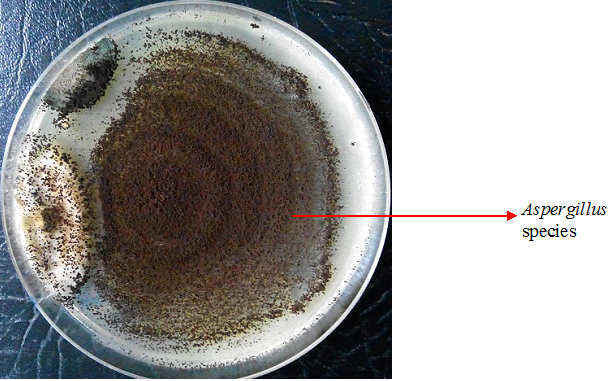Lichens produce two types of metabolites: primary metabolites (e.g. carbohydrates and amino acids) and secondary metabolites (e.g. alkaloids and lichen acids). Primary metabolites (which are intracellularly secreted) are critical to the survival of the lichens while secondary metabolites are rarely involved in the metabolism or growth of the lichenized fungi. Secondary metabolites of lichens are generally called lichen acids, and they are usually deposited on the surface of the lichen hyphae.
Thus, secondary metabolites of lichens are extracellular secretions of lichenized fungi, and they are primarily produced by the mycobiont (i.e. the fungi partner). Lichen acids exhibit numerous amounts of biological and non-biological activities; and these have been exploited by man to solve many health related and non-health problems. The secondary metabolites produced by lichens (which are over 800 in number) are unique, and they are not often sourced from other natural sources.
It is noteworthy that lichens only produce secondary metabolites when a suitable fungus is in association with a functional and compatible cyanobacterium and/or green algae. Thus, a suitable fungal partner and an appropriate phycobiont are essential for the secretion of biologically active compounds of lichens.
Some of the biological functions or activities of lichen secondary metabolites are as follows:
- They protect the cyanobacteria (phycobiont) from drying.
- They serve as anti-herbivores, thus preventing herbivorous animals from feeding on them.
- They protect the lichenized formation from possible microbial assault.
- They are used in the systematics and phylogeny of lichen classification.
- Lichen acids are used as lead compounds in drug development.
- They are used in the formulation of dyes, perfumes and even food.
- Lichen secondary metabolite possesses anti-tumor and cytotoxic activities.
- They help make the lichenized association to be pollution tolerant.
- Lichen secondary metabolites are used for the development of antibiotics, analgesics, anti-pyretics, and antioxidants.
References
Anaissie E.J, McGinnis M.R, Pfaller M.A (2009). Clinical Mycology. 2nd ed. Philadelphia, PA: Churchill Livingstone Elsevier. London.
Beck R.W (2000). A chronology of microbiology in historical context. Washington, D.C.: ASM Press.
Black, J.G. (2008). Microbiology: Principles and Explorations (7th ed.). Hoboken, NJ: J. Wiley & Sons.
Brooks G.F., Butel J.S and Morse S.A (2004). Medical Microbiology, 23rd edition. McGraw Hill Publishers. USA.
Brown G.D and Netea M.G (2007). Immunology of Fungal Infections. Springer Publishers, Netherlands.
Calderone R.A and Cihlar R.L (eds). Fungal Pathogenesis: Principles and Clinical Applications. New York: Marcel Dekker; 2002.
Chakrabarti A and Slavin M.A (2011). Endemic fungal infection in the Asia-Pacific region. Med Mycol, 9:337-344.
Champoux J.J, Neidhardt F.C, Drew W.L and Plorde J.J (2004). Sherris Medical Microbiology: An Introduction to Infectious Diseases. 4th edition. McGraw Hill Companies Inc, USA.
Chemotherapy of microbial diseases. In: Chabner B.A, Brunton L.L, Knollman B.C, eds. Goodman and Gilman’s The Pharmacological Basis of Therapeutics. 12th ed. New York, McGraw-Hill; 2011.
Chung K.T, Stevens Jr., S.E and Ferris D.H (1995). A chronology of events and pioneers of microbiology. SIM News, 45(1):3–13.
Germain G. St. and Summerbell R (2010). Identifying Fungi. Second edition. Star Pub Co.
Ghannoum MA, Rice LB (1999). Antifungal agents: Mode of action, mechanisms of resistance, and correlation of these mechanisms with bacterial resistance. Clin Microbiol Rev, 12:501–517.
Gillespie S.H and Bamford K.B (2012). Medical Microbiology and Infection at a glance. 4th edition. Wiley-Blackwell Publishers, UK.
Larone D.H (2011). Medically Important Fungi: A Guide to Identification. Fifth edition. American Society of Microbiology Press, USA.
Levinson W (2010). Review of Medical Microbiology and Immunology. Twelfth edition. The McGraw-Hill Companies, USA.
Madigan M.T., Martinko J.M., Dunlap P.V and Clark D.P (2009). Brock Biology of Microorganisms, 12th edition. Pearson Benjamin Cummings Inc, USA.
Mahon C. R, Lehman D.C and Manuselis G (2011). Textbook of Diagnostic Microbiology. Fourth edition. Saunders Publishers, USA.
Discover more from Microbiology Class
Subscribe to get the latest posts sent to your email.





